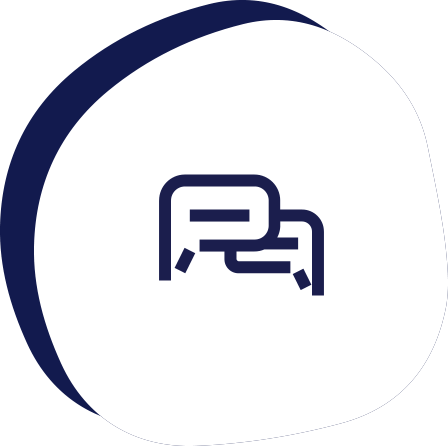
What are Human Resource Information Systems?
A HRIS describes a Human Resource Information System, a computer system equipped to automatically take care of HR processes. With a HRIS by their side, professionals in HR can easily administer data linked to their employees from compiling through to retrieval, including personal details, employment history, and records of their training; all from a single platform.
Other names for HRIS are: HRMS, which stands for Human Resource Management System, or HCM, meaning Human Capital Management, although they all mean the same thing. When a company grows over time, systems can become disjointed and disconnected, because of implementing quick solutions to fill in gaps or adding new assets to the mix. The resulting situation can look like incompatible, inconsistent data that’s not linked up.This explains why lots of different companies choose to restructure and elevate their services by employing the modern, cloud-based solution that is a HRIS.
The benefits of a Human Resource Information System
A HRIS can free up time for HR teams, by removing the need for them to undertake tedious, repetitive tasks and focus on their core role of managing people, therefore helping to shape a workforce that’s happy and productive.
Let’s further explore the benefits in detail.
Empowering businesses to grow
Rather than tacking on new providers and systems to handle company growth, HRIS technology that’s cloud-based often has the capacity to deal with expansion in real-time, including new employees, geographies, contracts, and volumes of data.
User experiences, made better
Contemporary HRIS that been designed to incorporate UX and feature interfaces that are user-friendly, could help improve the user experience for employees and potential employees. This type of interface might help make it easier for people to apply for jobs, to engage in benefits schemes, and to participate in other HR functions.
Lessen time-consuming labour
Functions that are typical in Human Resource Information Systems could assist companies in reducing costs in areas where prior to implementing HRIS, manual labour might have taken up a lot of time. These attributes include analytics, AI and automation – that can help support with tasks such as tracking attendance and processing payroll.
Enabling decisions that are driven by data
Helping professionals within HR to make decisions informed by facts, some HRIS include analytics that can model and forecast for businesses.
Keeping on top of compliance
By being consistently cloud-based and connected, some providers of Human Resource Information Systems can keep businesses up to date in terms of compliance while also ensuring security to help prevent data breaches.
The features of HRIS software – what are they?
HRIS delivers all-in-one HR solutions to businesses, in the shape of tailored tools and scalable features which are ready to support with all the challenges that come with growth. Let’s discuss the more typical features that you could expect to be included.

Recruiting and onboarding new employees
With a HRIS, recruiters could be supported to sift CVs, carry out screenings of applicants and undertake background checks.
Elevated payroll
Many of the available HRIS will automate the compulsory and optional deductions from staff salaries, therefore removing the need for manual processing and saving time plus potential mistakes. There are HRIS that can offer options such as flexible payments.

Scheduling, time, and attendance
When a HRIS automates time monitoring on behalf of a HR department, the system can communicate with payroll, helping to improve accuracy in the employee’s all-important wages.

Streamlined admin of company benefits
Company benefits offered by employers can usually be managed by HRIS, from pensions to various health insurances.

Legal updates
With a HRIS, recruiters could be supported to sift CVs, carry out screenings of applicants and undertake background checks.

Analysis and reporting
Methods of measuring HR can be automated by some HRIS. Data can be provided on demand by those systems, sending stakeholders alerts, reports and recommended actions.

All-in-one systems
A single system is offered by many HRIS, integrating tracking of employee time, company benefits, and payroll into the one unified system. There are systems that can sync up with other systems or enable end users to custom-make integrations that suit their particular set up.

Case Study: How Heritage Bank benefitted from HRIS
Challenges faced by the company
Heritage Bank is at the forefront of community banking in the Pacific Northwest region and is led by a team that includes Shannon Carson, the organisation’s Assistant Vice President and HRIS Officer. The bank began in 1927, while Shannon joined when there were just 150 staff members. By 2014, that figure was at 800 because of new contracts, organic growth and mergers. The rapid growth caused some growing pains that we’ll share in more detail.
- Disjointed, disconnected employee procedures and processes.
- Struggles to retain quality staff members in a competitive field.
- Keeping compliant in an environment with a confusing level of regulation.
Solutions delivered by ADP
- Implementation of one of ADP’s ranges of HRIS that was selected as the best fit to meet the needs of Heritage Bank.
- Introduction of an all-in-one platform to reduce on time-intensive manual processes for reporting.
- Streamlined recruitment functions for hiring candidates, helping to attract and keep quality talent.
- Enabling the capacity to produce exacting data reports, so that Shannon and her team can carry out future-focused strategic planning.
“I view ADP as a partner. They care about our success. They care about helping us to strategically partner with our executive team. They want to take the admin work out of HR and put those tools in the hands of the users. ADP has our best interests at heart and wants arm us with everything we need to do our jobs”
- Shannon Carson, Heritage Bank, HRIS Officer
Ready to learn more about ADP Human Resource Information Systems?
ADP provide all-in-one platforms that are cloud-based, compliant, and designed to efficiently streamline payroll and HR management – helping to save your business time, and costs.

Let's find the perfect solution for your business
Fill out the form and see what the ADP team of payroll and HR experts can do for you.
